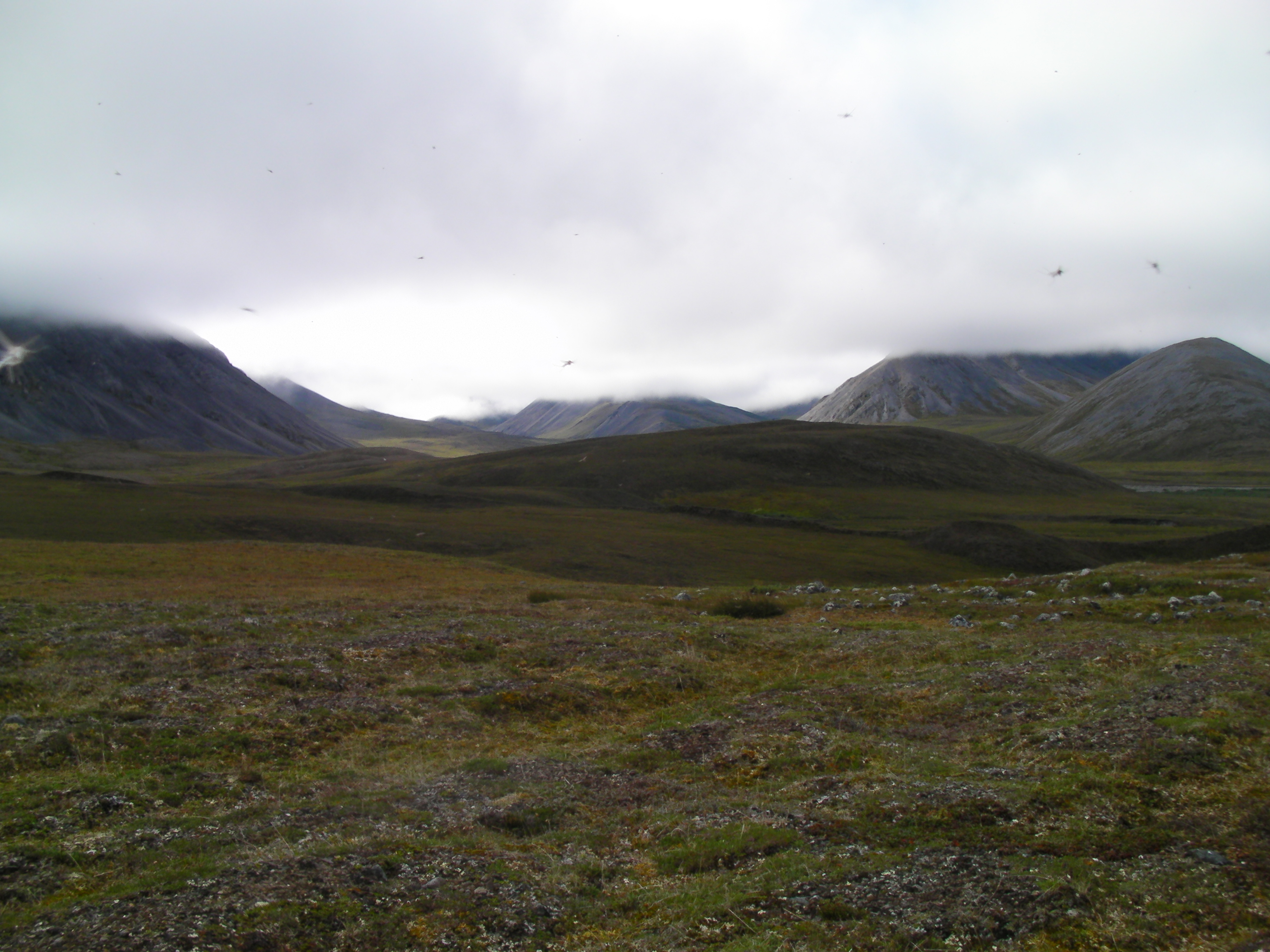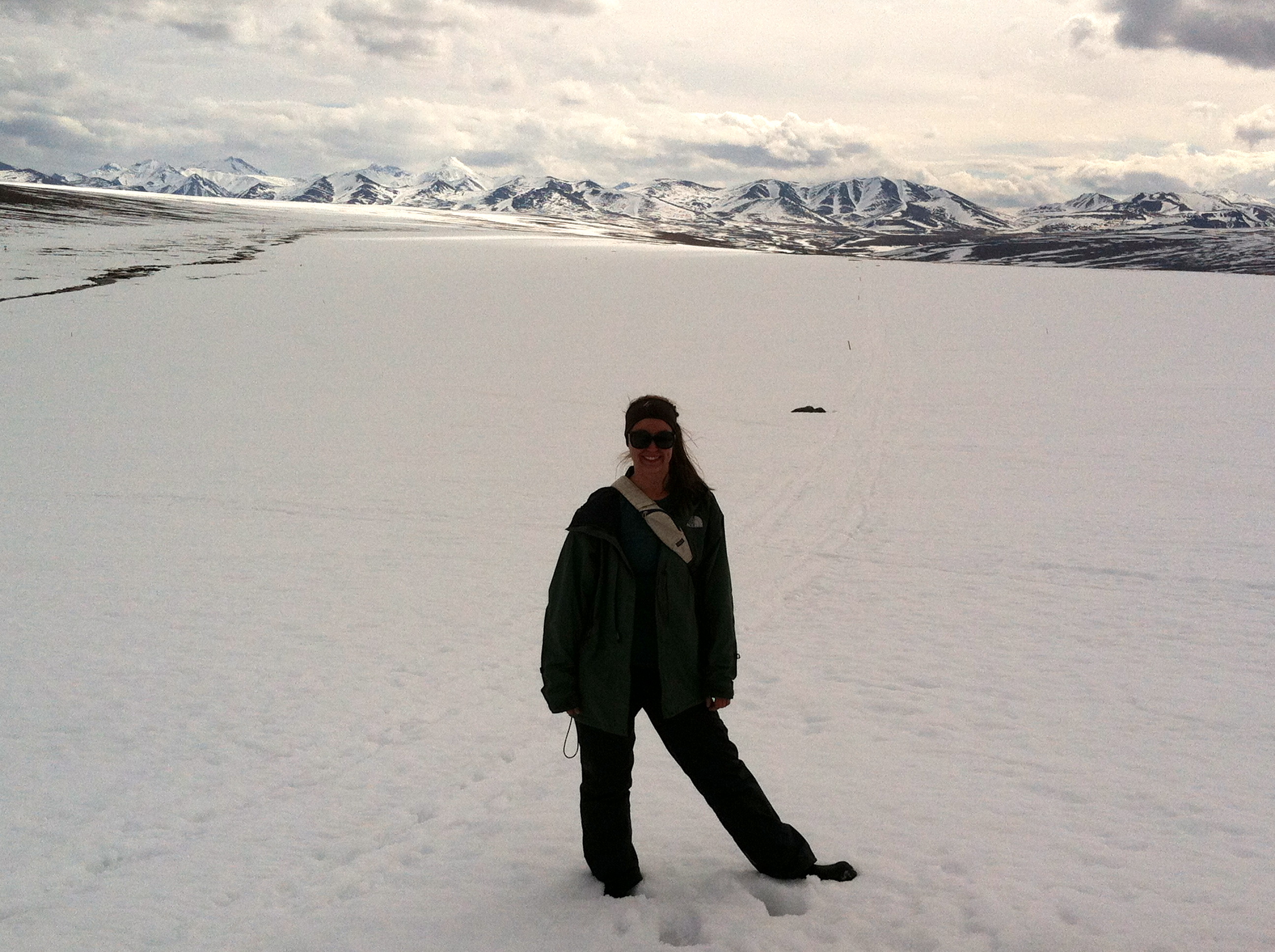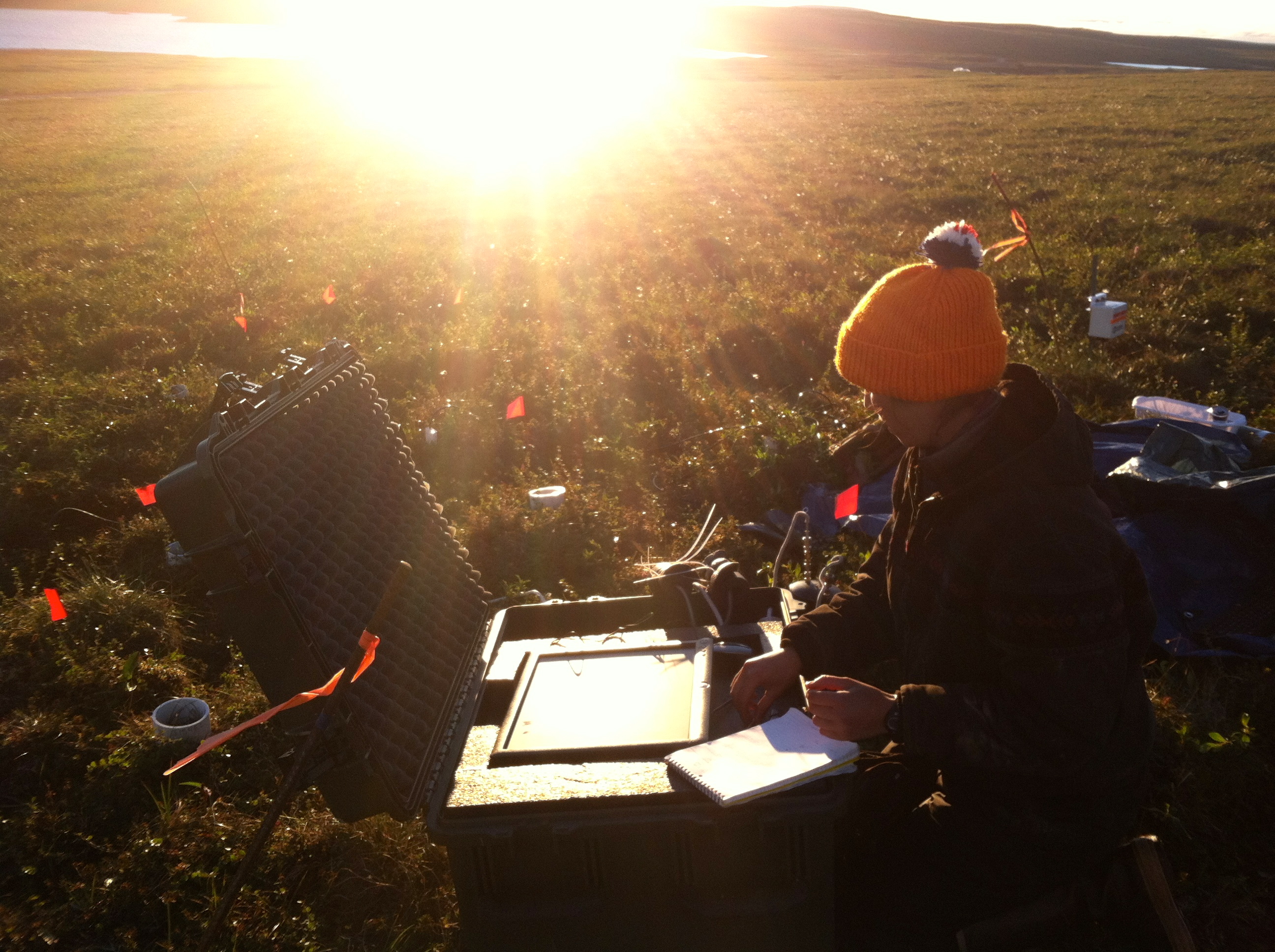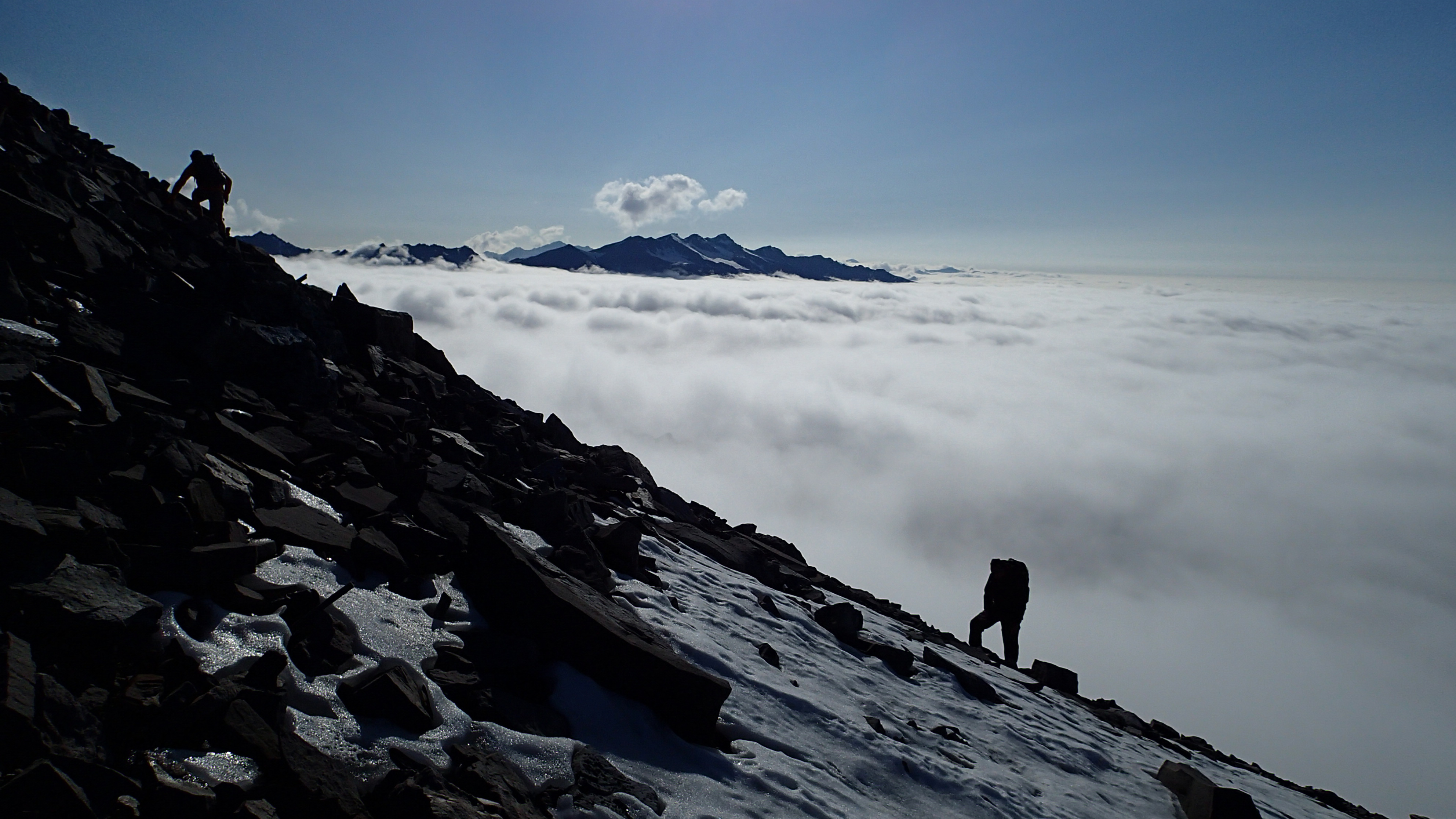
digging deep under a midnight sun
By Laurel Lynch and Megan Machmuller

This summer we traveled to Toolik Lake Research Station, an LTER site one hundred miles south of the Arctic Ocean. Our field sites are tucked in at the skirts of the Brooks Range, a place of severe beauty, that requires being prepared for unpredictable circumstances and harsh weather. Our field season comprises two completed field campaigns at Toolik in June and July and a third upcoming in September. The research objectives for our project aim to identify mechanisms responsible for soil carbon storage and release to the atmosphere, and to reduce uncertainty regarding the fate of Arctic carbon in a warming climate. Shrub expansion, or the greening of the Arctic, is a well-documented consequence of warming and we are simulating higher root exudation from shrubs by adding isotopically enriched 13C-glucose to soils and tracing its fate. We use a Picarro gas and isotope analyzer to measure the production of labeled CO2 through respiration, and use assays in the laboratory to track label incorporation into microbial biomass and the stabilization onto mineral surfaces.

We were quite surprised to find the mountains still blanketed in a persistent snow on our first trip to Toolik this season. We used snowshoes to trek out to our sites and dragged our equipment on sleds. Although inconvenient from a soil sampling perspective, we were fortunate enough to witness the incredibly rapid Arctic thaw (EcoPress Blog). Within days we were balancing backpacks over ankle-breaking tussock tundra and collecting frozen soils with an auger.

We left for our second field campaign in mid-July and were again greeted by snow, which quickly subsided and allowed us to begin using our Picarro gas analyzer, pictured above at 3 am. The Picarro allows us to measure in situ respiration rates to understand metabolic processes within the soils and quantify microbial use of added 13C-glucose. Despite spending long hours in the field (sometimes overnight) in the land of the midnight sun, one can find invigorating beauty at any hour.
The Arctic is a fascinating system to study because it is experiencing unprecedented rates of regional warming. The results of these changes are readily apparent, from highways that crack and heave as the frost below them thaws, to porcupines wandering about in treeless tundra. Less visible, but perhaps more sobering, is the fact that northern circumpolar soils store nearly 50% of the estimated global organic carbon pool while covering only 15% of the total land surface area. As the Arctic warms, this vault of carbon can be released into the atmosphere as carbon dioxide serving as a positive feedback to climate change. The vulnerability of this carbon stock depends on soil microbial activity and the physical and chemical environment. We hope the data we collect will unravel some of these complexities allowing us to elucidate mechanisms and predict the fate of this integral system.

*Project collaborators include: Dr. Matthew Wallenstein (CSU NREL), Dr. Francesca Cotrufo (CSU NREL), Dr. Eldor Paul (CSU NREL), Dr. Rich Conant (CSU NREL), Dr. Xudong Zhu (Lawrence Berkeley National Laboratory), Dr. Jinyun Tang (LBNL), and Dr. Bill Riley (LBNL).